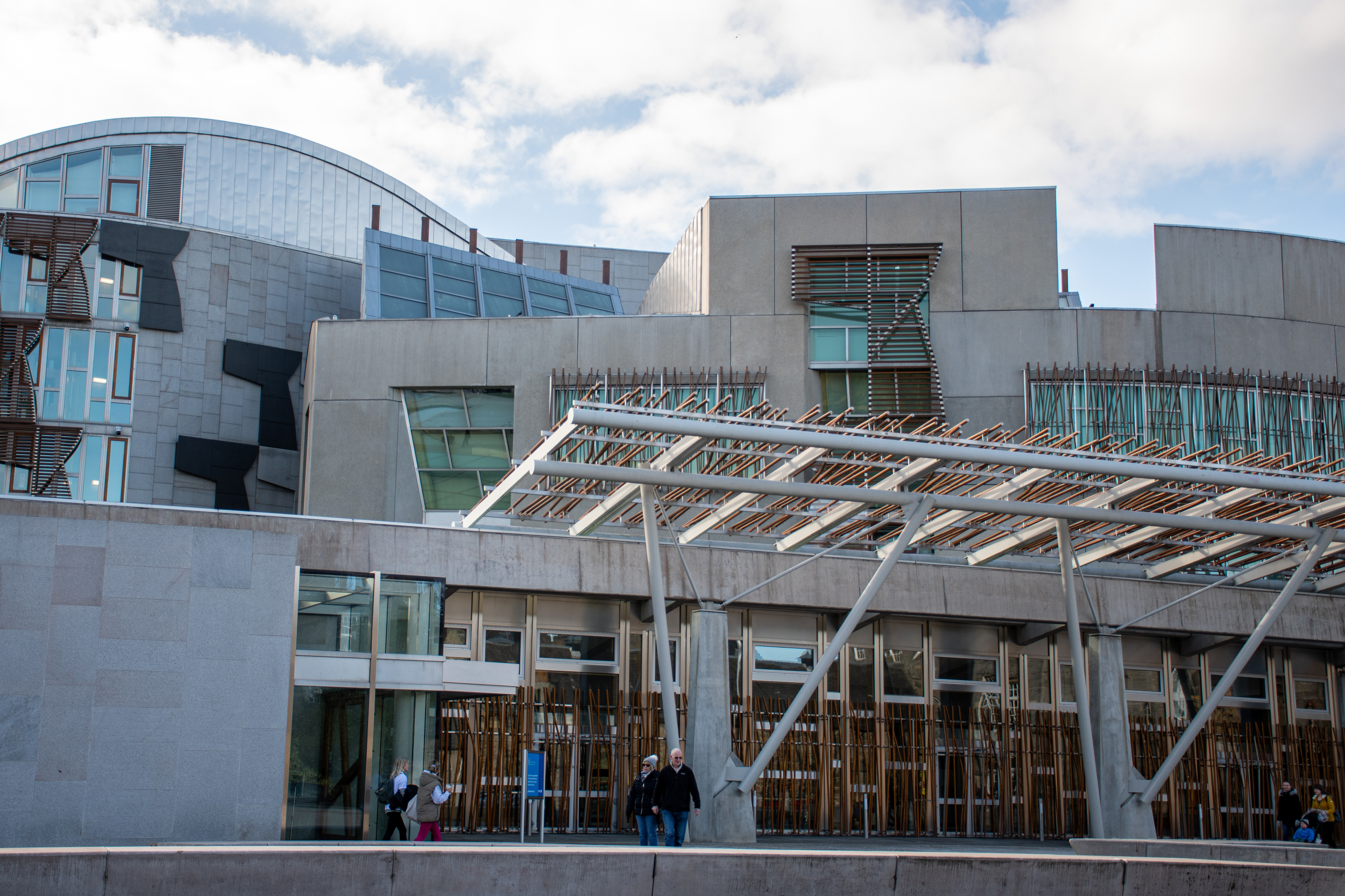Who Decides?
by Jeremiah Hassel
When Steve Laquerrière, 29, applied to the government of the United Kingdom to be legally recognized as a man in 2014, he was forced to produce photographs of himself going back two years and an array of documents including everything from household bills to his bank statements.
To get what is called a Gender Recognition Certificate (GRC), he was also required to prove that he had lived as a man for two years.
The new “evidence” was accepted, Laquerrière said, but then he ran into another problem — the judge had accidentally marked Laquerrière’s marital status incorrectly on the forms, so Laquerrière had to prove he wasn’t married and had never been married.
Once he had shown he wasn’t married, Laquerrière said his evidence was sent to a Gender Recognition Panel, the members of which decided whether or not he had proved himself.
“It was kind of funny in a tragic kind of way, saddled again with not even having the autonomy on my gender because a bunch of men wanted to first discuss my tits and finances,” he said.

Trans individuals such as Laquerrière in Scotland face uphill battles attempting to obtain legal gender recognition and access gender-affirming healthcare.
The Gender Recognition Reform bill would make changes to existing law by eliminating all evidence requirements, reducing the minimum age of applicants from 18 to 16, shortening the two-year-requirement of living as another gender to six months and removing an application fee.
While on its face, the proposal would seem to benefit those looking to apply for transitions, it’s also generated some controversy among people within the LGBTQ community. Nonbinary individuals – people who don’t identify as either a man or a woman – are opposed, because the bill deals only with biological males who want to be identified as women or biological females who want to be identified as men.
*******
Being out and proud while working in a public environment hasn’t always been easy for Fionn Duffy, a nonbinary person living in Glasgow.
For example, a few years ago, Duffy suffered a broken leg, went to the hospital and was “deadnamed” – identified by the name they previously used.
In identifying as nonbinary, Duffy doesn’t align with the gender identities of men or women — they instead identify as a mix of both genders, or, in some cases, as neither.
“As a trans person when you read that, you’re like, “What is the point? Why am I here? It’s not difficult for a doctor to address you and respect you, but the fact that you know that they’re not, it just makes it feel that there’s no point.”
Duffy, 32, owns and operates Category Is Books, a queer bookshop in the Govanhill neighborhood of Glasgow that stocks LGBTQ books and authors. They said the proposed change in the law was “worthless.”
“I’m still going to be stuck in the same situation,” Duffy said. “Nonbinary people – they decided it was too much work, so they just took it out. When they do it, you won’t be able to get recognized as a nonbinary person.”
*******
As a binary trans woman, Lindsay Kyle said the bill could be beneficial to members of the trans community in Scotland since it would modify what Kyle, 36, called the “completely insane” process for acquiring GRCs.

Kyle works as a bookseller at Lighthouse Radical Bookshop in Edinburgh, which she said is an “explicitly queer friendly and explicitly radical leftist” shop that creates a “very safe space” for members of the LGBTQ community in Edinburgh.
The bill would improve the experience of the shop’s target audience, Kyle said, because individuals applying for GRCs wouldn’t have to prove they’re “trans enough” to receive treatment.
But personally, Kyle said the bill likely won’t have much effect on her daily life — and she does not have a GRC.
While the GRCs are viewed as important legally by many, Kyle, who lives in Edinburgh, said she is already able to identify as female for banking and housing, as are many of her trans friends.
Only one of Kyle’s friends currently has a GRC, she said, and that person has “never been asked for it.”
The Scottish Government, however, said the government considers the bill “a balanced and proportionate way of improving the current process of obtaining legal gender recognition.”
The bill has also been criticized from people outside the LGBTQ community, particularly those who subscribe to something called gender-critical ideology, which is the belief that a person’s gender must match their genitals and can’t be changed.
One of the prominent subgroups in the gender-critical movement are trans-exclusionary radical feminists (TERFs) — individuals who believe in equal rights and experiences for women but who don’t believe that trans women are real women.
Two of the most outspoken critics are Harry Potter author J.K. Rowling and Irish television writer Graham Linehan, who said men who transition to women should not be able to use women’s facilities.
“Part of the problem now is, all the debate around the system changing is causing a lot of what was sort of ‘under-the-radar’ transphobia to come more to the surface,” Laquerrière said
“You can’t have any peace, because you have to assume that anybody you come across — your taxi driver or whoever — has just read an article about ‘we’re not so sure about trans people’ and that sort of stuff,”
Rye, 29, is a nonbinary individual in Glasgow who goes by a one-name pseudonym. After moving to Scotland from Germany in 2019, Rye said they’ve noticed several shops and businesses that rely on the sale of Harry Potter merchandise, which they said is a “sting” to the trans community in light of Rowling’s views on the trans community.
The frustration for Rye is that the media has begun to publish more articles on Rowling and her anti-trans platform, which then leads to an increase in anti-trans messaging in media across the board.
“You can’t have any peace, because you have to assume that anybody you come across — your taxi driver or whoever — has just read an article about ‘we’re not so sure about trans people’ and that sort of stuff,” Rye said.
*******
Maggie Lennon, 62, a member of the Women for Independence National Committee — an organization for women’s rights formed ahead of the 2014 referendum for Scottish independence that campaigned for a yes vote — said the Gender Recognition Reform bill would make it “much easier” for women to “self-identify and be given a Gender Recognition Certificate.”
Allowing trans women easier access to GRCs could help them mitigate the injustices that “just mount up and mount up and mount up” for them, Lennon said, such as discriminatory practices like slurs and bullying.
She said the process should begin with educating the public on what trans and nonbinary people experience as they attempt to navigate the National Healthcare System “to be able to live the way they want to live,” she said.
Kyle said she experienced the NHS’s process firsthand.
It took Kyle six months to receive gender transitioning treatment from Scotland’s NHS after she came out as trans — and she was one of the “really, really lucky” ones, she said.
Some of Kyle’s trans friends have been waiting for over two years, Kyle said, and they haven’t heard anything back from the NHS.
There’s a multi-step process for receiving gender-affirming healthcare in Scotland: In most cases, a trans individual speaks with their general practitioner, who refers them to a gender identity clinic. The clinic must diagnose the patient with gender dysphoria — typically defined as distress or discomfort a person experiences due to a mismatch between their biological sex and gender identity.
With a diagnosis, the patient may begin hormone treatment, speech therapy, psychotherapy and minor operations to remove either facial hair or female breasts.
Over the course of the next 12 months, the patient is monitored during initial treatments and is assessed for gender dysphoria a second time.
Then, the patient may undergo gender reassignment surgery or other treatments.
However, long wait times for appointments in all parts of the Gender Reassignment Protocol caused some of Kyle’s feminine-identifying trans friends to begin experimenting with hormones themselves, Kyle said, thus skipping the majority of the protocol.
Because estrogen isn’t currently a controlled substance in the U.K., Kyle said this “DIY” process worked.
But Kyle’s masculine-identifying trans friends couldn’t access testosterone to do the same, she said, because testosterone is a controlled substance requiring a prescription.
“It’s like they put this roadblock in place to make it as difficult and as frustrating as possible to get access to any kind of trans healthcare,” Kyle said. “There’s all these stumbling blocks that add up to making the whole thing incredibly arduous for no good reason.”
Lynsey Brown, who works with the Gender Identity & Healthcare Access department of the Scottish Government, said the government remains “committed to improving the lives of trans people who continue to experience poorer outcomes relative to the wider population” in mental and physical health.
In July 2021, Brown said the chief medical officer wrote to the National Gender Identity Clinical Network for Scotland and requested a review of the Gender Assignment Protocol in Scotland to ensure it would continue to “reflect best practice and the needs of people using gender identity services.”
Since then, Brown said a working group was established to collect feedback, partly through a survey it sent out that they use to “inform their work.” Feedback has been limited to “those who have used or are waiting for gender identity healthcare services in Scotland.”
The NHS also published a strategic action framework 2022-2024 in December 2021, which plans to add £9 million in funding to Scotland’s NHS “to address waiting times, new multidisciplinary care and support for people waiting to access services,” specifically for those seeking or receiving gender identity services in Scotland.
The framework also proposes national service standards the NHS will work to implement and plans for staff training and data collection.
Overseeing the framework is a National Gender Identity Healthcare Reference Group that consists of “people with lived experience of using gender identity healthcare as well as clinicians, academics, NHS Boards and [LGBTQ] organizations,” according to Brown.

“The Scottish Government believes that it is important that trans people, and anyone exploring their gender identity, should be able to access the right support at the right time,” Brown said. “The publication of our NHS Gender Identity Services strategic action framework demonstrates our commitment to improve gender identity healthcare in Scotland.
“The Scottish Government expects everyone to be treated fairly, equally and with respect when seeking healthcare,” Brown added.
Gender-critical ideologies have permeated politics, Duffy said, where TERFs have been elected to nearly every party in both the Scottish and U.K. Parliaments and “fight back” against trans-friendly legislation.
While Duffy said improvements are being made by the NHS and the rest of the Scottish Government, they said the government and legislation has “a long way to go.” Timeframes for passing legislation can range, and specific deadlines have not been set for many bills on the table.
“It’s getting there,” Duffy said, “but it’s baby steps.”